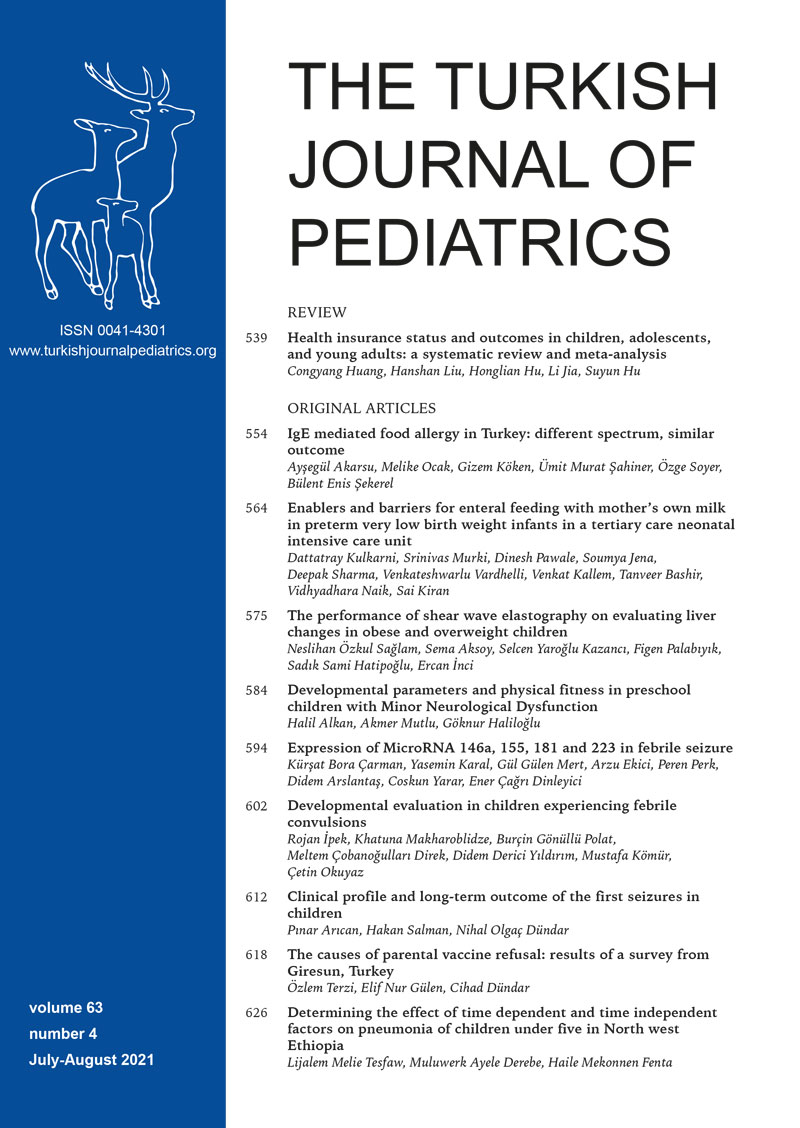Abstract
Background. We studied microRNAs (miRNAs) -146a, -155, -181 and -223 expressions and proinflammatory cytokine levels in children with Febrile seizure (FS) and compared to febrile controls.
Methods. This prospective multicenter study examined representative populations in eight different cities in Turkey between June 30, 2018 and July 1, 2019. Blood samples were taken from all children at presentation. The real time (RT) polymerase chain reaction (PCR) were used to measure the expressions of microRNAs and tumor necrosis factor alpha (TNF-α), interleukin 1 beta (IL-1β), and interleukin 6 (IL-6) levels were studied by enzyme-linked immuno-sorbent assay.
Results. The study was conducted with 60 children; 30 children with FS and 30 children in the febrile control group. The seizure was classified as simple FS in 73.3 % and half of the children were experiencing their first FS episode. Although the expression levels of miRNAs-146a, -181a and -155 were higher in febrile seizure patients, only miRNAs 146a level was significantly higher in FS patients. Serum TNF-α, IL-1β, IL-6 levels were higher in the FS group than the controls. The results of statistical analysis showed that there were correlations within miRNA expressions in children with FS. No differences were found considering miRNA expression between FS type, number of FS experienced.
Conclusions. miRNAs-146a, -181a, -155 and -223 may be involved in FS pathogenesis. Altered miRNA expression levels might be an adaptive response to inflammation. New therapeutic approaches might be developed based on miRNA expressions in children with FS.
Keywords: febrile seizure, microRNA, proinflammatory cytokine
Copyright and license
Copyright © 2021 The Author(s). This is an open access article distributed under the Creative Commons Attribution License (CC BY), which permits unrestricted use, distribution, and reproduction in any medium or format, provided the original work is properly cited.














